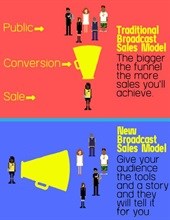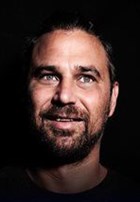It's a strange time for media in general. Spending is shifting like Namibian sand in the wind. TV is cheaper, radio is morphing like food dye in water and the promise of a digital future is waxing lyrical.
The pursuit of audience is on as brands and broadcasters contest for the soul of the recently powerful consumer. No longer faceless, the man in the street is now the one behind the microphone and in front of the camera.
Internationally, brands have taken a leaf out of this book. Intel and Dell, for instance, have made a social film with Oscar winners Robert Stromberg and JK Simmons for Hulu. This is not a corporate video uploaded to YouTube and watched only by half-interested employees. It is an eye-candy experience made for a premium on-demand TV service. It blurs the line between entertainment and branded content. There are even a few seconds while watching it where you almost believe they made it for the viewer and not for the brands it represents. On-demand services like Netflix and Hulu may be the death of traditional linear TV but that is a discussion for another time. Today, I am, as always, intrigued by the moves radio will make into the future.

If you don't know me then let me fill you in. I am fortunate in being able to work with sub-Saharan Africa's top radio minds. This covers agencies, sales houses and radio stations. I also get to work with the UK's best in this space. I deem the UK market to be about three years ahead of us trend-wise. It creates a kind of "international overlay", which I can view the local radio space through. Call it a hint of things to come.
Locally, I sense the radio industry polarising itself as it transforms. There are two camps forming. Let's go all "Game of Thrones" as we name them. One camp we'll call the Lannisters. They are lions who know gold. The other camp are the Starks and they have but one mantra: "Winter is coming. We're all doomed."
I see the difference in attitude between these two camps represented in meetings almost daily. The Starks devise defensive and reactive manoeuvres to counteract their anxiety. This anxiety is likely brought on by the shrinking in radio spend this last financial year. The Lannisters are quite the opposite. They know something. A secret. They see the notion that the traditional model of broadcasting is waning as an opportunity - not a death knell.
And that secret is that the funnel has tilted.
The Lannisters are certainly seeing shrinkage in their traditional income area - that is the 30-second spot. That's okay. They are, to a degree the co-architects of this shrink because they are creating the new spaces for the spend to flow.
When a brand comes to them and says they want to move a percentage of their spend from FM, they offer the brand a host of new spaces to play. Sometimes, there are new radio ideas needing traction like Barney Simon's move to woo back his cult rock following with his Rock On app. But in other spaces it's just about giving the advertiser and audience the tried and tested with a digital veneer.
Here, there is an established audience to hand the mic over to. The Lannisters know about handing over the mic, they understand the picture to the left is the picture of the future.
Give your audience the tools and a story and they will tell it for you. The problem with the Starks is that they are traditional thinkers in a new media space. They see digital in a traditional sense. That is it sits at the top and trickles down onto the ground where it manifests itself in people performing some sort of action. Perhaps buying a product, ticket or a service of some sort. But in the real world two events recently let me see the above graphic in action. The Lannisters were handing out golden stories and the people were retelling them gleefully.
In this particular real world example of new thinking in the radio space I'll turn to Durban's East Coast Radio (who recently held their big walk event) and the recently crowned 2015 MTN Radio Station of the Year Jacaranda who held their Jacaranda Day event over the same weekend.
From the outside they are standard events that the stations hold each year. From the inside they were apparently briefed by the Lannister powers-that-be to create digital storytelling experiences. How? By handing over the mic to their audiences. And their audiences did not let them down. Now before I go any further let me tell that I am all about the audience. To me, traditional advertising is like the friend at the party who only talks about himself. So when I get to write about a station's success being because of its audience and not because of its billboards or DJs, I become excited.
In the case of Jacaranda Day, the event trended on Twitter for over 12 hours, taking the number 1 spot. Using Instagram cardboard cutouts, a dedicated team of promo staff encouraged people to tweet and showed them how to use hashtags. That is handing over the mic.
Over 35 million users were reached across the digital world during the build up to and after the event. That's astounding and it was done by the audience members.
The event was an immersive, shareable and interactive experience. 15,000 people were given direct access to technology that allowed them to cast themselves from the physical world back out into the digital space. For the first time in the event's history, all ticket sales were digital. That is a sure fire way to ensure that everyone who bought a ticket had some form of digital savvy or were close to someone who did. The audience became the influencers.
The event was a successful one in the eyes of the station, the brands and the visitors. It shows me how the graphic above can actually climb off the page of theory and change the way we experience festivals.
The second event blows me away on a personal level even more. It might be because I hale from Durban but I think it is more because of the following set of stats.
Over 30,000 people took part in East Coast Radio's Big Walk. One could say that bigger crowds take part in similar Gauteng events but for me, 30,000 peeps in Durbs is worth more than 50,000 in Jozi. #JustSaying #IMHO
The first stat that blew me away was a serious myth-buster. The myth is that radio isn't relevant to a young audience any more yet the highest number of entrants were under 19.
The second myth it debunked is this one: Radio audiences are shrinking. Through its Facebook campaign alone, the event reached over 400,000 people. That excludes twitter, on-air and website stats. Just because the audience is engaging you somewhere other than FM, doesn't mean it's not your radio audience.
Again the twitter trend driven by audiences on the ground was brilliant. People at the east coast event were asked to take selfies of themselves and tweet out their pic with the hashtag #HealthySelfie. Yeah I get it, selfies are so last year but this wasn't a vapid campaign driven by the chance to win with some nebulous hashtag. It was a simple mechanism to help people share their real life experience with their friends. Selfies are like boerewors at a braai, it never gets old.
From the experience on the day came authenticity from this engagement tool. Any radio stations that can create these authentic experiences for their audience and then arm that audience to tell their peers about it will be the ones to win back the love and partnership of the brands they've served for so long. The audience are the architects now, the stations must become the enablers.
The stories told about Jacaranda Day and the East Coast Radio Big Walk were a result of those stations letting go and empowering their most important asset.
In closing, if you are a Stark or a naysayer of radio's future, I just want you to know this. When the tape deck came out they said it would end radio. It didn't. When the CD player came out in our cars, they said it would end radio. It didn't. MTV promised us that its video would kill our radio star. It didn't. Digital gurus, ninjas and specialists will now tell us the same thing and they'll be wrong too. Radio is the original medium, like Levis and Mercedes Benz. Digital will only allow the experts behind the mics to tell more stories on more streams in so many more ways. And as long as the desire to create authentic experiences for audiences is there, the audiences won't go anywhere else. It's a human thing.
To use an analogy that references my voyeuristic interest in South Africa's rock god's experiment into digital audio: There's a ton of music services that can automate, pre-selected rock playlists for me, but there's only one Barney Simon. Maybe the way we do it will look a little different, but at its heart it will remain unchanged.



































